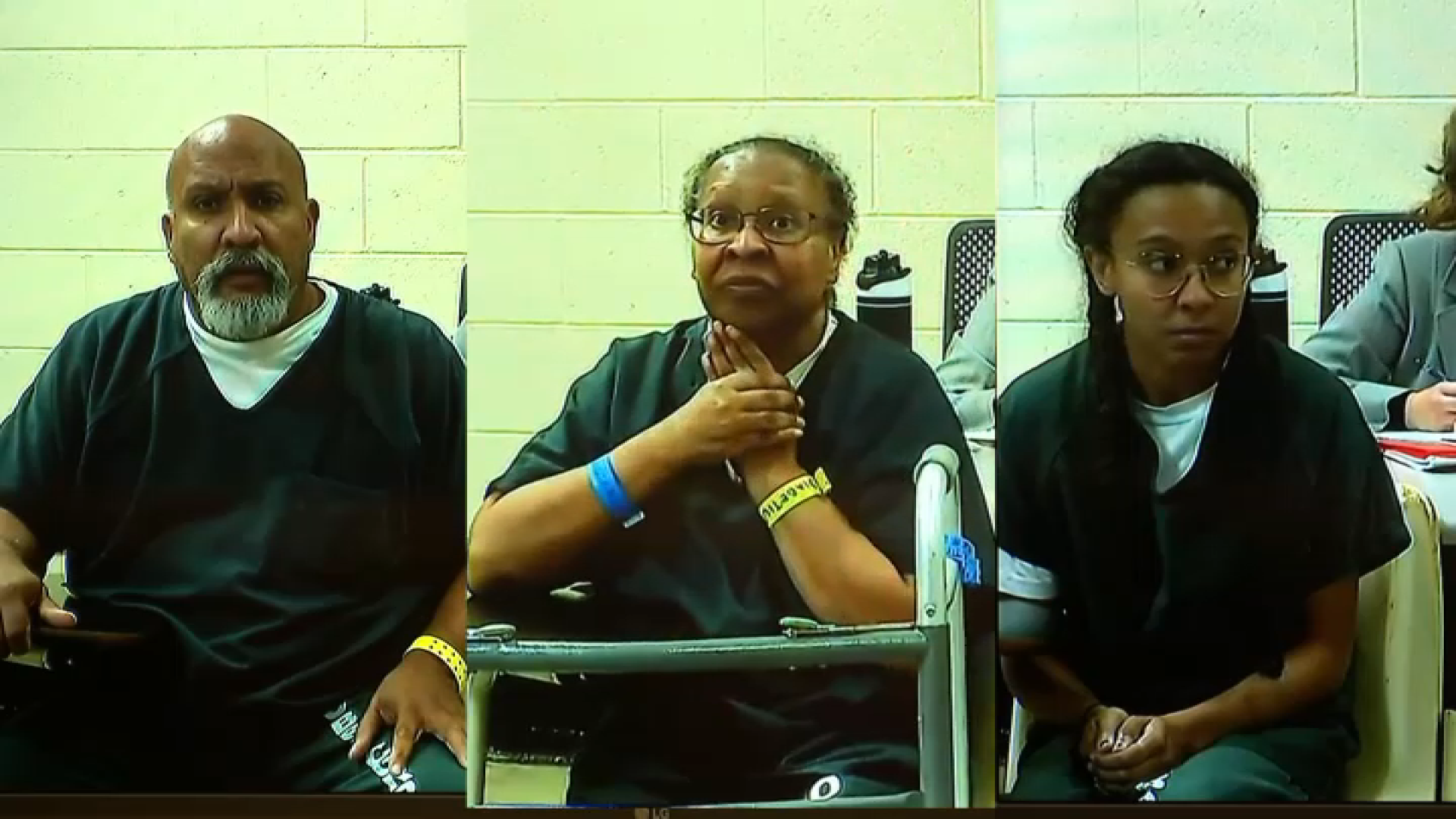NJ Tragedy: Woman Charged in 5-Year-Old Neglect Death
Tragedy in Robbinsville: NJ Woman Charged in 5-Year-Old Girl's Death
Introduction: A Community Gripped by Sorrow
Imagine receiving that dreaded phone call, the one that shatters your world in an instant. This is the reality for a community in Robbinsville Township, Mercer County, New Jersey, where a 5-year-old girl's death has sparked a harrowing investigation. Raphaelle Register, 36, now faces charges of endangering the welfare of a child, leaving many to grapple with unanswered questions and overwhelming sadness. How could such a tragedy occur? What circumstances led to this devastating loss? We'll delve into the details as they unfold, exploring the facts and the implications of this heartbreaking case.
The Incident: Unresponsive Child Found at Home
On a seemingly ordinary Sunday, April 27th, police were called to a home in Robbinsville Township for a report of an unresponsive 5-year-old girl. Time is always of the essence in these situations, yet tragically, the young girl was pronounced dead shortly after arriving at the hospital. While her identity remains undisclosed, the void she leaves behind is undoubtedly immense. This is not just a statistic; it's a life cut short, a future stolen.
The Charges: Endangering the Welfare of a Child
The subsequent arrest of Raphaelle Register on Monday, April 28th, brought the charges of endangering the welfare of a child into sharp focus. What does this charge really mean? It suggests a failure to provide the necessary care and protection for a child, placing them at risk of harm. The specifics of the allegations against Register are deeply troubling, pointing to a potential pattern of neglect.
Legal Duty: Caring for Multiple Children
According to the criminal complaint, Register had a legal duty to care for not just one, but four children: the deceased 5-year-old, another 5-year-old, an 8-year-old, and a 12-year-old. That's a huge responsibility! The allegations suggest that she failed to meet this duty, leaving all four children unattended. This raises serious questions about the circumstances surrounding their care and the support systems, or lack thereof, in place.
Unattended and Neglected: A Disturbing Allegation
The most disturbing aspect of the case revolves around the claim that Register allegedly left all four children unattended. Think about it: a 5-year-old, an 8-year-old, and even a 12-year-old need supervision and guidance. To leave them without adult care is a recipe for disaster, and in this case, the consequences were catastrophic. What measures were taken to ensure their safety and well-being?
Failure to Provide: Basic Needs Unmet
The investigation also points to a failure to adequately feed and nourish the two 5-year-olds, or provide them with access to necessary medical treatment. Food and medical care are basic human rights, especially for children. To allegedly deny them these essentials speaks volumes about the alleged neglect and the desperate situation these children may have been living in. Was help available, and if so, why wasn’t it utilized?
The Autopsy: Seeking Answers in Death
An autopsy was performed on the girl on Monday afternoon. This critical step will hopefully shed light on the cause and manner of her death. Was it directly related to the alleged neglect, or were there other contributing factors? The results of the autopsy will be crucial in determining the full extent of Register's alleged culpability and will play a pivotal role in the ongoing investigation. Officials have not yet revealed the cause and manner of the girl's death.
The Investigation: Unraveling the Truth
This case is far from closed. The investigation is ongoing, and detectives are likely piecing together a complex puzzle. They will be interviewing witnesses, gathering evidence, and examining the living conditions of the children involved. Every detail, no matter how small, could be crucial in uncovering the full truth and bringing justice to the young girl who lost her life. What challenges will investigators encounter, and how can the community assist?
Community Impact: Grief and Outrage
The death of a child always resonates deeply within a community. Grief, shock, and outrage are common emotions. Residents are likely asking themselves how such a tragedy could happen in their neighborhood. This event may trigger a desire to help other children in need and to ensure that similar situations are prevented in the future. What support is available for grieving families and community members?
Child Welfare Concerns: A System Under Scrutiny
This case will undoubtedly bring renewed scrutiny to the child welfare system. Are there enough resources available to protect vulnerable children? Are social workers adequately trained and equipped to identify and address potential neglect situations? The death of this 5-year-old girl highlights the urgent need for ongoing evaluation and improvement of the systems designed to safeguard children. How can we strengthen these systems to better protect our children?
The Legal Process: What Happens Next?
Raphaelle Register now faces a long and arduous legal process. She will likely be arraigned, where she will formally hear the charges against her and enter a plea. Depending on the evidence and the severity of the charges, the case could proceed to trial. It's important to remember that she is presumed innocent until proven guilty in a court of law. What are her legal options, and what potential penalties does she face?
Understanding Child Neglect: Beyond the Headlines
Defining Child Neglect
Child neglect is often a subtle and insidious form of abuse. It involves a failure to provide for a child's basic needs, including food, shelter, medical care, supervision, and emotional support. This can have devastating consequences for a child's physical and psychological well-being. How can we differentiate between unintentional oversight and intentional neglect?
Types of Neglect
Neglect can manifest in various forms, including physical neglect (failure to provide adequate food, clothing, or shelter), medical neglect (failure to seek necessary medical care), educational neglect (failure to ensure a child attends school), and emotional neglect (failure to provide emotional support and nurturing). Recognizing these different types can help identify potential cases of neglect more effectively. What are the warning signs of each type of neglect?
The Long-Term Effects of Neglect
The impact of child neglect can extend far beyond childhood. Neglected children are at a higher risk of experiencing mental health problems, substance abuse, and difficulties forming healthy relationships later in life. Early intervention is crucial to mitigate these long-term effects. What resources are available to help children who have experienced neglect?
Preventing Child Neglect: A Community Effort
Education and Awareness
Raising awareness about child neglect is essential for prevention. Educating parents, caregivers, and community members about the signs of neglect and the resources available to help struggling families can make a significant difference. How can we improve public awareness campaigns to reach those who need them most?
Supporting Families in Need
Many cases of child neglect stem from poverty, lack of resources, or parental struggles with mental health or substance abuse. Providing support to these families, such as access to food banks, affordable housing, and mental health services, can help prevent neglect before it occurs. What specific programs are most effective in supporting at-risk families?
Reporting Suspected Neglect
Anyone who suspects a child is being neglected has a moral and often legal obligation to report it. Reporting suspected neglect is not about judging parents; it's about protecting children. Anonymous reporting options are often available to encourage people to come forward. What steps should you take if you suspect a child is being neglected?
Conclusion: Seeking Justice and Preventing Future Tragedies
The death of this 5-year-old girl is a heartbreaking reminder of the vulnerability of children and the importance of protecting them from harm. As the investigation unfolds and the legal process moves forward, it is crucial to remember the young life that was lost and to strive for justice. This tragedy also serves as a call to action, urging us to strengthen the child welfare system, support struggling families, and prevent future instances of child neglect. The focus should not only be on the case at hand, but also on the broader issue of child welfare and the responsibility we all share in ensuring the safety and well-being of our children.
Frequently Asked Questions
- What constitutes endangering the welfare of a child in New Jersey?
In New Jersey, endangering the welfare of a child involves any act that harms or is likely to harm the physical, mental, or moral well-being of a child. This can include neglect, abuse, or creating a situation where a child is at risk of harm.
- What are the penalties for child endangerment in New Jersey?
The penalties for child endangerment in New Jersey vary depending on the severity of the offense and the harm caused to the child. Penalties can range from fines and probation to imprisonment. More severe cases can result in longer prison sentences.
- How can I report suspected child abuse or neglect in New Jersey?
You can report suspected child abuse or neglect in New Jersey by calling the State Central Registry (SCR) Hotline at 1-877-NJ ABUSE (1-877-652-2873). You can report anonymously if you prefer. If a child is in immediate danger, call 911.
- What resources are available to support families struggling with childcare in New Jersey?
New Jersey offers various resources to support families struggling with childcare, including the Child Care Subsidy Program, which helps low-income families afford childcare. Additionally, there are family resource centers, food banks, and other community organizations that provide assistance.
- What are the signs of child neglect that I should be aware of?
Signs of child neglect can include poor hygiene, inadequate clothing, chronic hunger, unattended medical needs, lack of supervision, and failure to attend school regularly. A child exhibiting multiple of these signs may be a victim of neglect, warranting further investigation.


